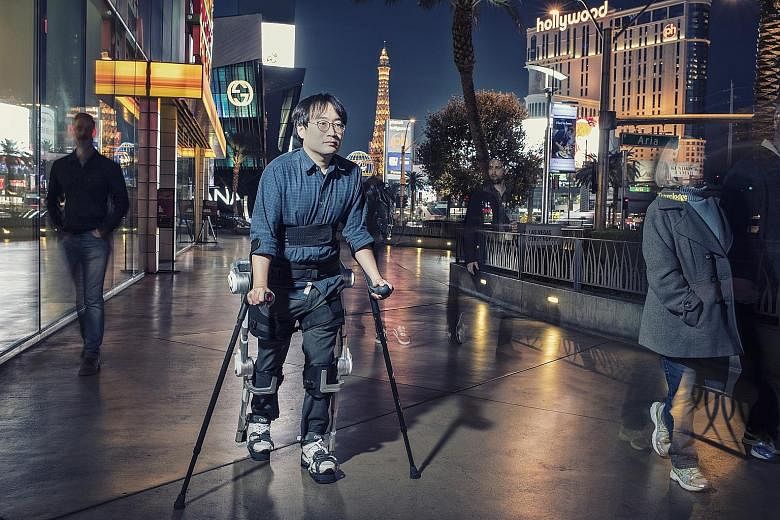For an able-bodied person, it takes less than 10 minutes to transfer lines at Sindang Station, one of the biggest transit points in Seoul.
For a person in a wheelchair, it takes up to 40 minutes.
"Most subway stations in Korea were designed without mobility disabled people in the picture," said Ms Hong Yun-hui, founder and head of Muui, a non-profit that provides transit information for people with physical impairments.
In 2017, Muui released a service that gives passengers the easiest transfer routes in select stations. The app can tell users which subway car is closest to the elevator and which corridors have more ramps.
The non-profit started with 14 stations and expanded the service to 33 this year. Volunteers collect the information by actually wandering the stations in wheelchairs.
Ms Hong started Muui because of her daughter, who is unable to walk due to neuroblastoma. She believes that people with disabilities should venture out and raise awareness of their experiences, but the infrastructure and technology in South Korea are far from sufficient.
According to the Ministry of Land, Infrastructure and Transport, one out of four people in South Korea faces difficulties getting around on their own.
Ten per cent of that population has limited mobility because of conditions inherited at birth or wrought by a tragic accident. That adds up to about 1.2 million people in a country of 50 million.

Perceptions of people with disabilities cannot change overnight, but technology and services can.
Todo Works is a Korean start-up that provides kits to turn manual wheelchairs into electric ones.
"I witnessed my daughter's friend struggling with a foldable wheelchair, so I made a motor in about six months that let her more easily move around," said Mr Shim Jae-shin, founder and chief executive of Todo Works.
The motor weighs about 4.5kg and, coupled with a foldable wheelchair, the contraption is lighter than an electric wheelchair, which can easily exceed 100kg.
Mr Shim said the kit, called Todo Drive, represents a "midway technology" that resolves an immediate inconvenience until a more complete solution is developed.
Todo Drive sells for 1.76 million won (S$2,000), while similar imported products go for more than five million won on average.
Conglomerates have also started initiatives to help people with limited mobility. Hyundai Motor Group set up a social enterprise called Easy Move in 2010 to develop products catered towards that population. The company remodelled its Carnival van and Ray box car with a ramp in the trunk so that wheelchair users can easily get in and out. The modified cars and other products posted two billion won in sales in 2011 and this went up to 7.7 billion won in 2017.
Hyundai's research has expanded to the realm of wearable robots.
At the 2017 Consumer Electronics Show, it unveiled three types of wearable robots, also known as exoskeletons. One of them, called H-MEX (Hyundai Medical Exoskeleton), allows people with lower spinal cord injuries to walk.
The exoskeleton market is expected to exceed US$3.4 billion (S$4.7 billion) by 2024, according to Global Market Insights, and research on the technology is rising in South Korea.
Such futuristic technology, however, has a long way to go in helping people with physical impairments. "Most of the robotic equipment being developed today cannot be worn or taken off by disabled people on their own," said Professor Kim Jong-bae at Yonsei University.
Accessibility is also a problem.
"We already experienced an information gap problem when the Internet and (personal computers) first emerged," he said. "If technology of the so-called fourth industrial revolution doesn't consider accessibility among the disabled population, it will end in a serious 'technology gap'."
• This story was originally published on March 12 last year.

